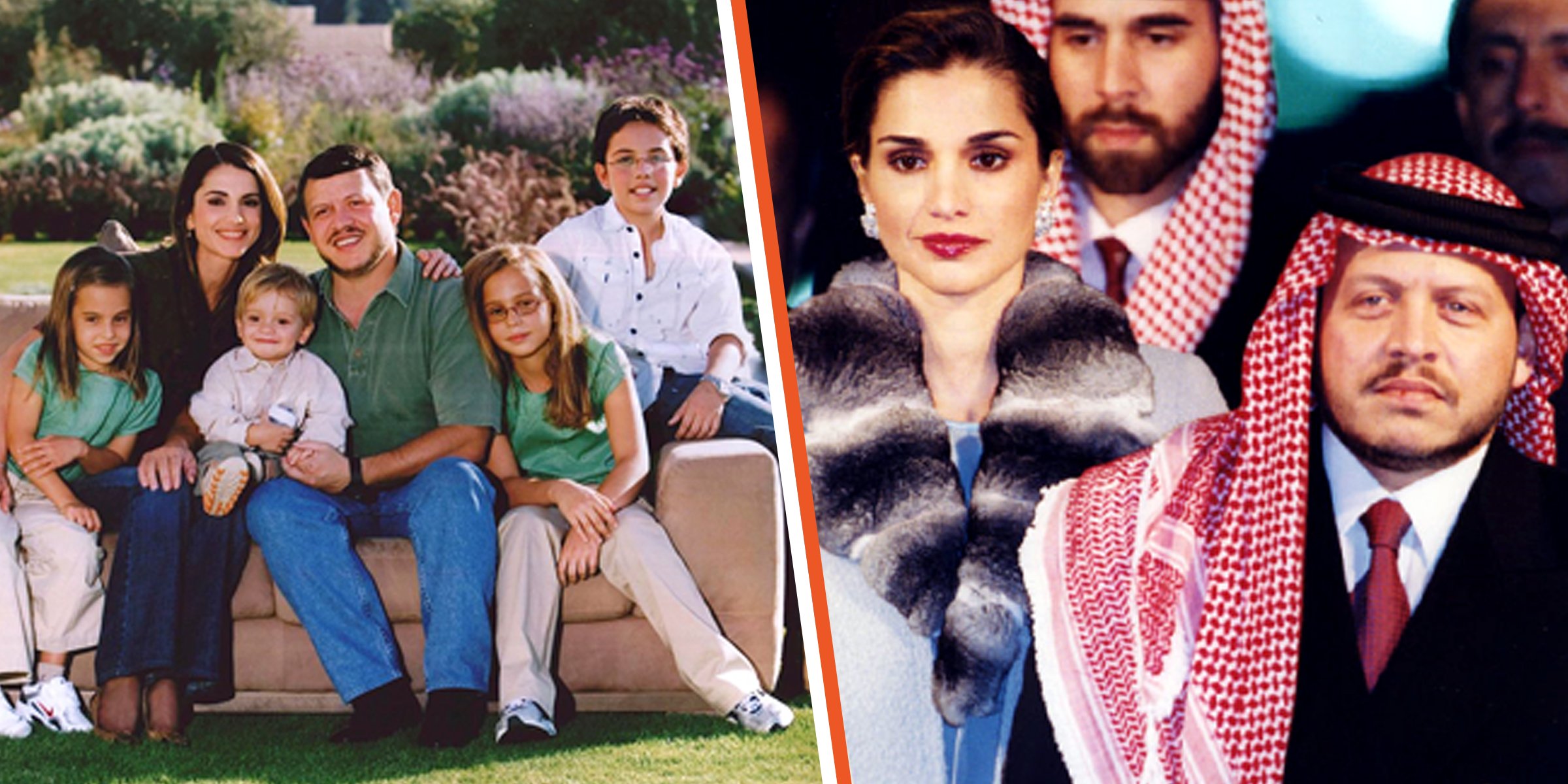
Jordan's Prince Fell for a Refugee Girl — They Planned a Different Life Yet Were Crowned King & Queen
Queen Rania of Jordan was working her way up the corporate ladder when her life changed. As a marketer with Apple, she accepted a dinner invitation from a friend, and she was soon on a different course than she had planned for her life.
Today, she is a fashion icon who advocates for women's empowerment and pushes for better education for girls worldwide. The author and mother of four revealed that her life is like a fairytale.
Here's a look at how she went from being an Apple staff to becoming a queen while claiming that being a mother is a more demanding job than ruling.
![King Abdullah II and Queen Rania with their children Princes Hussein and Hashem and Princesses Iman and Salma for their 2007 New Year card [left], The King Abdullah II and Queen Rania in Paris on November 15, 1999 [right] | Source: Getty Images](https://cdn.amomama.com/a1deda177f846b6364941df2ece39273.jpg)
King Abdullah II and Queen Rania with their children Princes Hussein and Hashem and Princesses Iman and Salma for their 2007 New Year card [left], The King Abdullah II and Queen Rania in Paris on November 15, 1999 [right] | Source: Getty Images
Queen Rania of Jordan was born Rania al Yassin on August 31, 1970, in Kuwait. Her parents were Palestinian, and she grew up in Tulkarm with her siblings, where her father was a physician.
She started her education in Kuwait City before attending the American University in Cairo, Egypt, where she obtained a degree in business administration in 1991.
When the first Gulf War started in 1991, her family had to flee from Kuwait, and they resettled in Amman, Jordan. Once she graduated from school, she quickly joined her family in Jordan.
After graduation, Rania worked in marketing at Citibank before accepting a similar job title at Apple's office in Amman and was working her way up the corporate ladder.
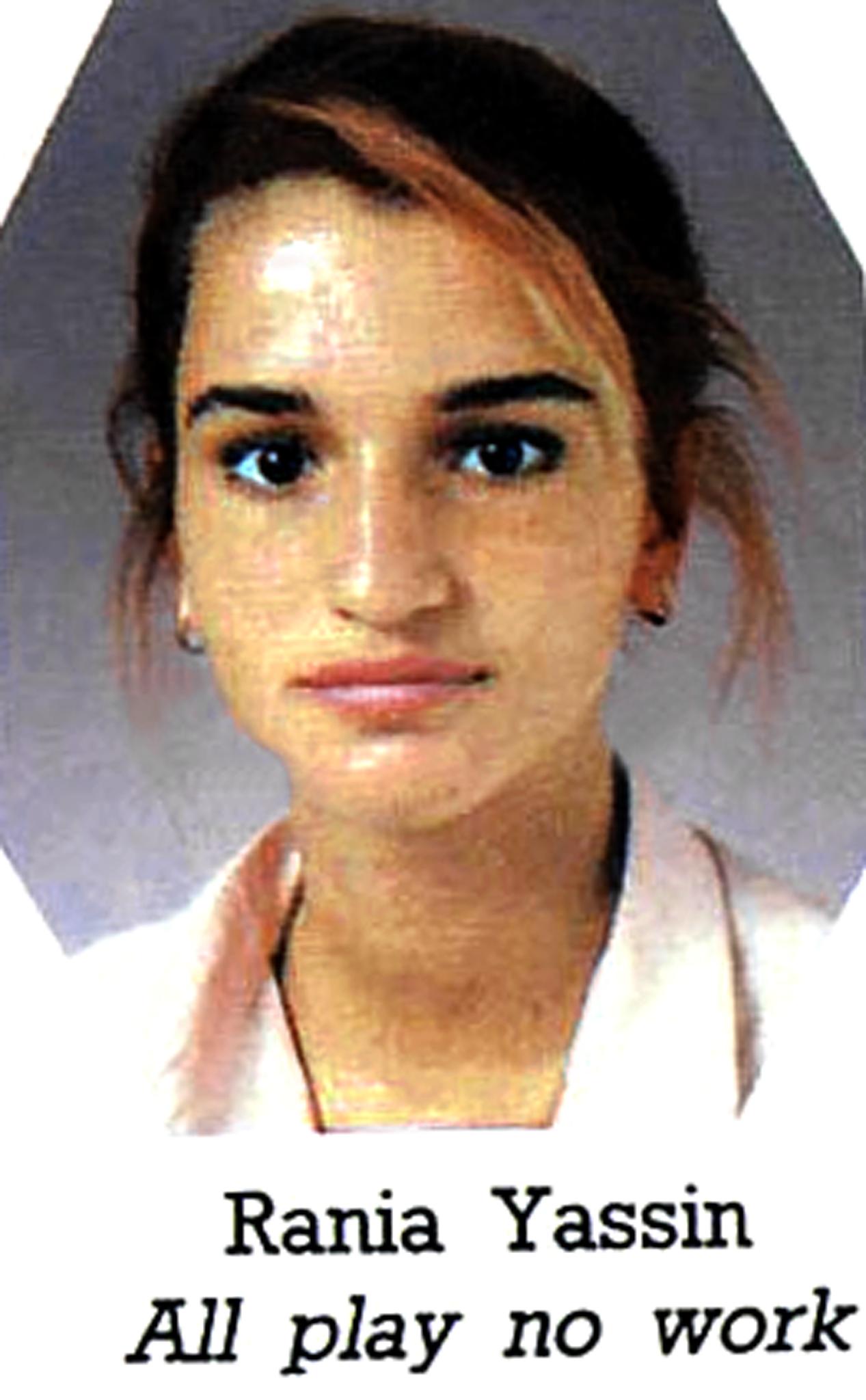
Queen Rania at 17 from the New English School's yearbook. | Source: Getty Images
MEETING THE PRINCE AND GETTING MARRIED
At 22, in January 1993, she honored a dinner party invitation and caught the eye of Jordan's Prince Abdullah, and he was one of the world's most eligible bachelors at the time.
For Rania, meeting and falling in love with a prince was intimidating, but she saw it as just another boy meets girl kind of story.
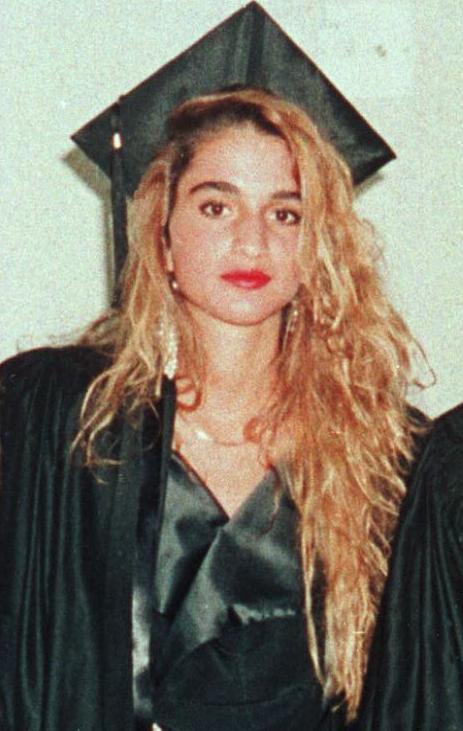
Queen Rania after graduation from the American University in Cairo in 1991. | Source: Getty Images
However, for Prince Abdullah, the feelings were different. He said:
"For me, it was, I know it sounds a bit corny, but love at first sight."
Two months after they met, they got engaged. Four months after they got engaged, they had a royal wedding and started a family.
On June 10, 1993, Rania wore a gold-trimmed short-sleeve gown that featured an overcoat, an embroidered collar, and a voluminous skirt for their Zahran Palace wedding.
Her husband wore his traditional military dress uniform. At the time, he was actively serving in Jordan's military and had planned a lifelong career in the force.
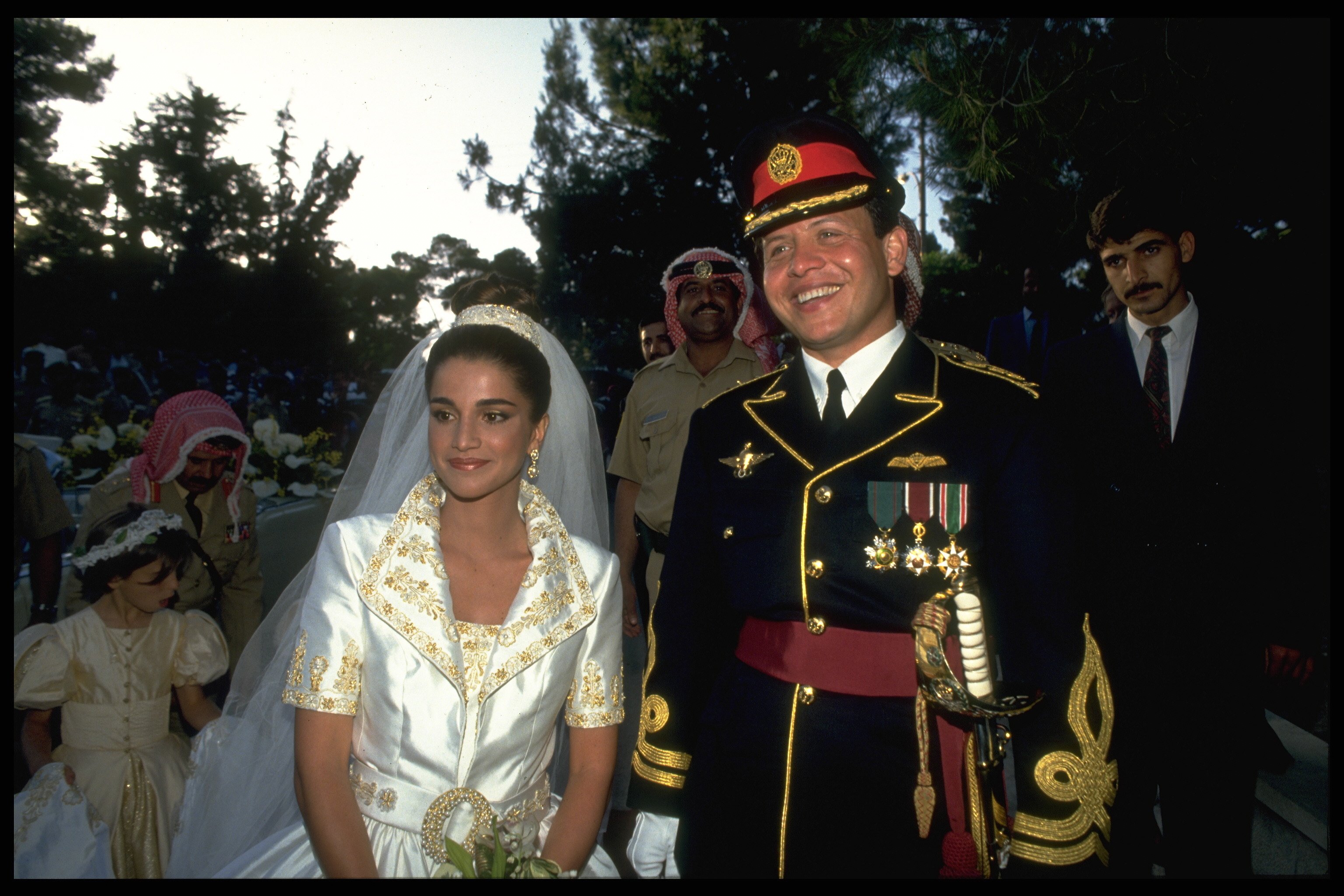
Queen Rania and King Abdullah on their wedding day | Source: Getty Images
FROM REGULAR ROYALS TO RULERS
After their marriage, Rania and Abdullah became regular young royals, albeit very much in love, and Abdullah, who loves fast cars, only had eyes for Rania.
A year after their nuptials, they had their first child and named him Hussein, after his grandfather. On King Hussein's deathbed, he made Abdullah the Crown Prince bypassing the original line of succession.
Two weeks after he made the changes, King Hussein died, and at 37, Abdullah became King while Rania became one of the youngest Queens in the world.
The sudden events shocked Rania as they had lost a king they all loved at 63, and her family was to take over. However, the people solidly backed them and celebrated their succession. It was like a fairy tale.
THE ROYAL OFFSPRINGS
On June 28, 1994, the couple welcomed their first child, Crown Prince Hussein. He who was appointed heir to the throne in July 2009
Princess Iman followed his birth on September 27, 1996. Four years later, on September 26, 2000, they welcomed another daughter, Princess Salma, and their last child Prince Hashem was born on January 30, 2005.
In December 2021, the 51-year-old mother of four proudly showed off her family on her social media page as she wished her followers good health into the new year.
For Rania, being a mother is sometimes more challenging than being a queen, as she has learned to hone her negotiating skills while dealing with her children.
Even as a queen, she also struggles to protect her children from online bullies. She has left room for an open dialogue with her kids. Also, she does not snoop around, so she does not lose their trust in her.
She revealed that she advises her children to spend less of their lives looking at the screens of their phones and more of their lives being in the present and enjoying nature or reading.
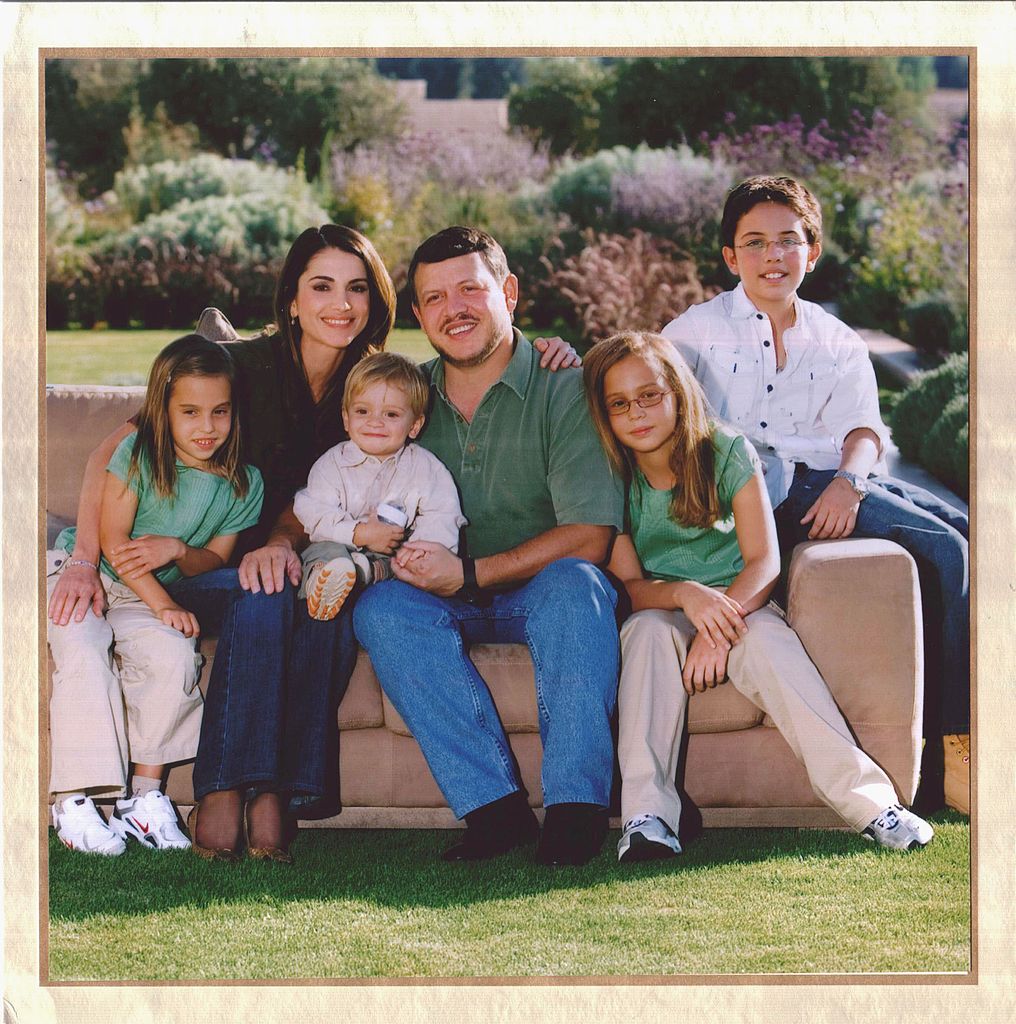
King Abdullah II and Queen Rania with their children Princes Hussein and Hashem and Princesses Iman and Salma for their 2007 New Year card. | Source: Getty Images
Rania wants her children to experience regular life and tries to ensure her kids have an identity outside of their title. The Queen wants them to carry their title, not for the title to carry them.
She ensures that they see their title as a responsibility and not a privilege. Also, she makes sure that they are aware of their history, faith, and heritage.
HOW THE ROYALS RELAX
After over two decades of being married, when the couple celebrated their 24th anniversary, Rania took to her social media page to say she still feels like the "luckiest woman in the world."
Despite being royals, Rania and her husband enjoy the simple pleasures of life as she says her husband makes one of the best steaks and burgers.
They spend time in their garden where he grills, and on weekends, they get to relax and connect over good food to feel grounded.
THE QUEEN AS AN ICON
Over the years, Rania has become one of the Arab women that others look up to for inspiration. She quickly became a fashion icon because of her elegant approach to modest dressing.
She knows when to dress up and dress down and has worked to break the stereotypes and change the perception of Muslim women.
Besides her fashion sense, Rania, who has a great relationship with the British Royals, is constantly pushing for better education and has become a powerful advocate for educational reforms and youth empowerment, especially for women.
She has served as a Global Honorary Chair of the UN Girl's Education Initiative and created the Queen Rania Teacher Academy under the Queen Rania Foundation for Education and Development.
Her goal is to help young people from Jordanian, Palestinian, and Syrian backgrounds, along with refugees. She teaches young girls about taboo topics such as personal hygiene, emotional intelligence, and personal space.
